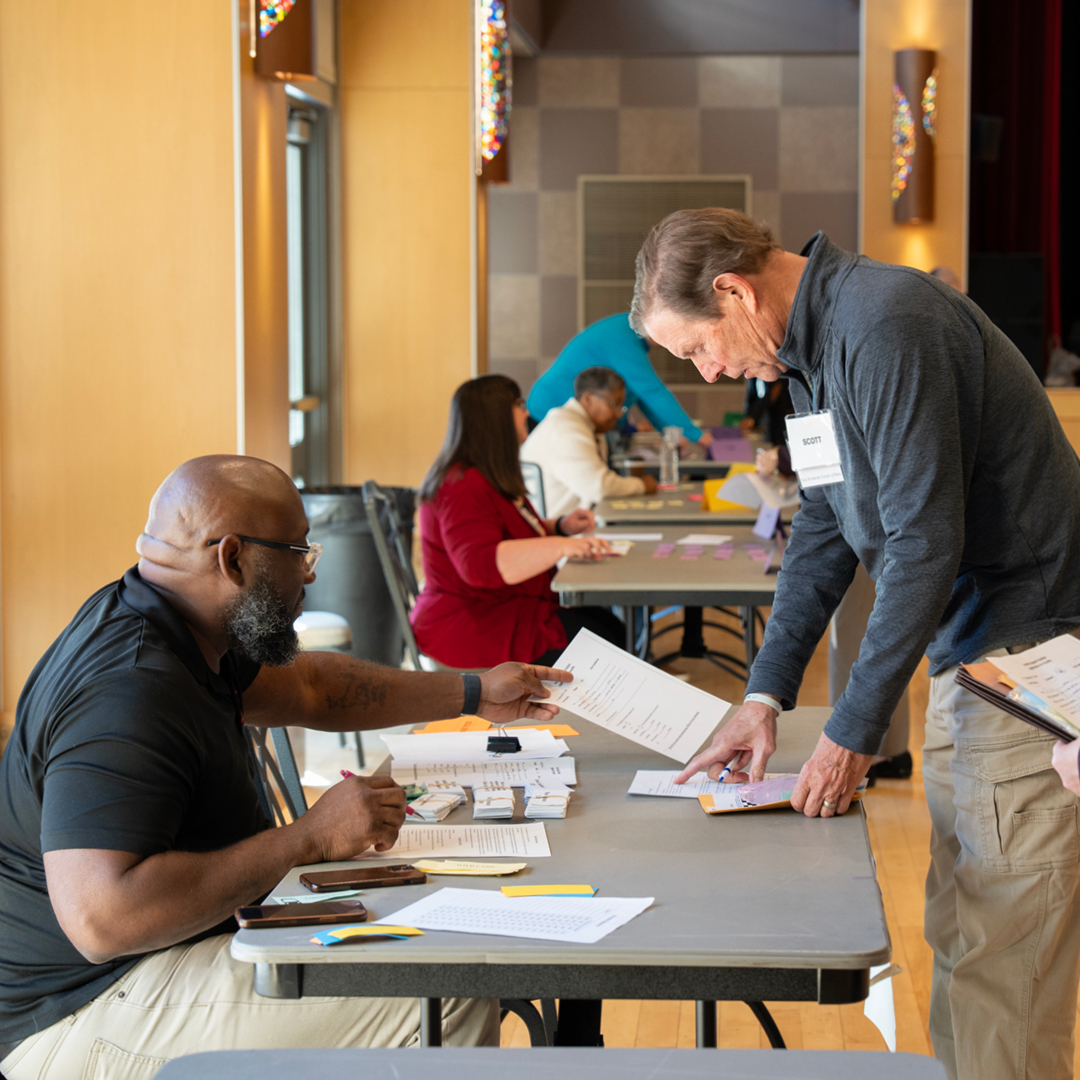Reentry Simulations Highlight Specialized Dockets Conference

During a reentry simulation, conference attendees learned the challenges individuals face when released from prison.
Nearly 800 judges, magistrates, probation officers, treatment providers, attorneys, and community partners attended the Supreme Court of Ohio’s annual Specialized Dockets Conference. This year’s event drew 475 attendees to the Ohio State University campus in Columbus, and another 300 joined online.
With over 200 programs certified by the Supreme Court, Ohio continues to be a national leader in the field These programs can be tailored to address specific populations or issues, including veterans, operating a motor vehicle while under the influence of drugs or alcohol, human trafficking, domestic violence, and reentry into society after incarceration.
The conference offered opportunities to network, share best practices, and explore new approaches. Sessions featured discussions on trauma-informed practices, addiction science, ethics, reentry, media relations, and more.
Learning From Experience
To further educate courts on the subject of reentry and specialized dockets, the Ohio Department of Rehabilitation and Correction attended the conference and presented reentry simulations in the morning and afternoon breakout sessions. A recent report released by the Supreme Court of Ohio Reentry Task Force recommended that Ohio expand its reentry docket offerings.
“Reentry programs are essential to help returning citizens become productive members of society,” the report explained. “These programs assist individuals in securing employment, housing, and the skills they need to restore stability to their lives.”
The premise of the simulations was to provide attendees with a glimpse of the challenges incarcerated people face upon release from prison to make courts more aware of the assistance needed for success.
Those who participated in the simulation were given new identities as fictional people just released from prison. Each person’s scenario was different, with varying levels of resources from money to transportation to identification records. However, all were expected to find jobs, secure housing, and attend all necessary appointments to meet parole requirements.
Participants were faced with difficult decisions and no guidance to reach their goals. As they increasingly felt despair, many turned to crime for money. Many ended up back in jail. The experience emphasized the importance of having resources ready for people when they leave institutions to maximize their success.
“A lot of times when someone is released from prison, they go right back to the same environment — same people, same places, same triggers. That’s what gets them back into trouble. Reentry dockets are about breaking that cycle,” said Judge Anthony Donofrio, who presides over Mahoning County’s reentry docket.
Broadening Services
When Judge Donofrio took office, mental health and addiction specialized dockets were already established. He wanted to fill a service gap in the courts and find a way to help people.
“I thought a reentry docket was a good opportunity because it provides resources for individuals getting out of prison who often have nowhere to go — no employment, no training, no housing,” he said.
Participants are often assigned to reentry dockets as a condition of judicial release. The assignment can be decided at the time of sentencing, pending an upstanding record while in prison or jail, or at the time an individual asks a judge for early release.
Judge Donofrio assembled a team consisting of several agencies that provide mental health and addiction treatment, education and employment assistance, and help with housing. They meet weekly with participants to assess their needs individually. The process starts before they leave prison to ensure participants have plans tailored to their needs once released.
“It's a very rewarding process. You get to know these guys over the period of a year to two years,” he said. “And you get a lot of pride seeing the changes that they make.”
He encourages other judges in Ohio to begin their own reentry specialized docket.
“We would be very willing to help in any way to get them started,” Judge Donofrio said.
Want to have the good work of your court featured on Court News Ohio? Share news releases with us by emailing cno@sc.ohio.gov
